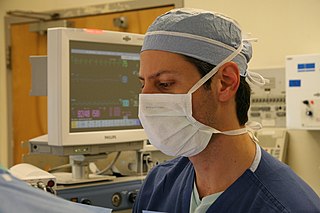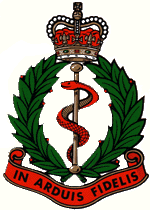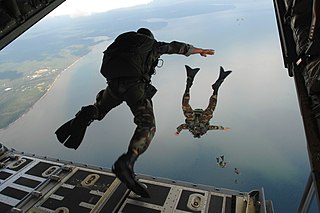
A backpack—also called knapsack, rucksack, rucksac, pack, sackpack, or backsack—is, in its simplest frameless form, a cloth sack carried on one's back and secured with two straps that go over the shoulders, but it can have an external frame, internal frame, and there are bodypacks.

A surgical mask, also known as a procedure mask, is intended to be worn by health professionals during surgery and during nursing to catch the bacteria shed in liquid droplets and aerosols from the wearer's mouth and nose. They are not designed to protect the wearer from inhaling airborne bacteria or virus particles and are less effective than respirators, such as N95 or NIOSH masks, which provide better protection due to their material, shape and tight seal. Surgical masks are popularly worn by the general public in East Asian countries to reduce the chance of spreading airborne diseases.
A bag of holding is a fictional magical item in the Dungeons & Dragons roleplaying game, capable of containing objects larger than its own size. Since its introduction, it has appeared in other media.

A field ration, combat ration or ration pack is a canned or pre-packaged meal, easily prepared and eaten, transported by military troops on the battlefield. They are distinguished from regular military rations by virtue of being designed for minimal preparation in the field, using canned, pre-cooked or freeze-dried foods, powdered beverage mixes and concentrated food bars, as well as for long shelf life.
Freedent is a gum manufactured by Wrigley's. Freedent was first introduced in the US and UK in 1975 and is marketed as the gum that "won't stick to most dental work. Freedent comes in three flavors - Peppermint, Spearmint, and Winterfresh. It also comes in two package sizes: single packs containing 15 sticks of gum, and multi-packs containing 8 packs of 5 sticks each. Sugar-free versions of Freedent are also available in several countries, including France.
Hiking equipment is the equipment taken on outdoor walking trips. Hiking is usually divided into day-hikes and multiple-day hikes, called backpacking, trekking, and walking tours.

The 16th (Parachute) Field Ambulance was a Royal Army Medical Corps unit of the British airborne forces during the Second World War. The unit was the first parachute field ambulance unit of the British Army. Their first deployment was in Operation Torch the Allied landings in North Africa. This was followed by Operation Fustian during the Allied invasion of Sicily. Their third mission was Operation Slapstick, a seaborne landing at Taranto in Italy.
A Don pack or Dressing pack, was designed for the airborne forces of the British Army during the Second World War.

The 127th (Parachute) Field Ambulance was a Royal Army Medical Corps unit of the British airborne forces during the Second World War.

The 181st (Airlanding) Field Ambulance was a Royal Army Medical Corps unit of the British airborne forces during the Second World War.

The 6th Parachute Battalion was an airborne infantry battalion of the Parachute Regiment raised by the British Army during the Second World War.
The 1972 Pattern Webbing was intended to replace the 58 pattern webbing, but never got beyond user trials. It was made from PU-coated nylon to counter the Soviet NBC capability with a general look closer to a load-bearing vest. It was designed to be used in wide variety of environments such as jungles, deserts and was configurable for use, ranging from short-duration jungle patrols to general infantry use.

The 225th (Parachute) Field Ambulance was a Royal Army Medical Corps unit of the British airborne forces during the Second World War.

The 195th (Airlanding) Field Ambulance was a Royal Army Medical Corps unit of the British airborne forces during the Second World War.

The 133rd (Parachute) Field Ambulance was a Royal Army Medical Corps unit of the British airborne forces during the Second World War.

The 224th (Parachute) Field Ambulance was a Royal Army Medical Corps unit of the British airborne forces during the Second World War.

The 1908 Pattern Web Infantry Equipment was an innovative type of webbing equipment adopted by the British Army before World War I.

The Wireless Set No. 38 was a HF portable man-pack radio transceiver used by the British Army during World War II. Designed by Murphy Radio, it was a 5 valve set covering 7.4 to 9 MHz and powered by a large dry cell battery carried in a separate haversack. An AFV variant was also developed for use alongside the Wireless Set No. 19 in armoured vehicles to allow direct communication between tank commanders and infantry. In 1945, a Mk. III version was produced housed in a sealed diecast metal enclosure.











